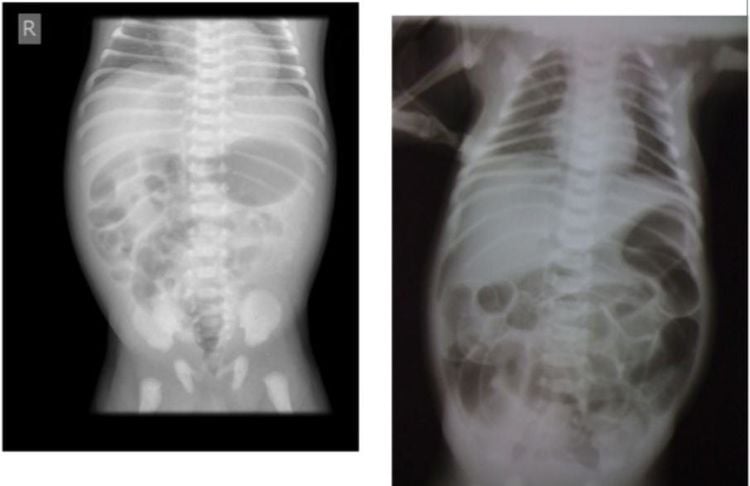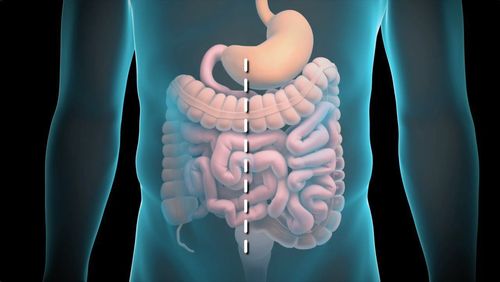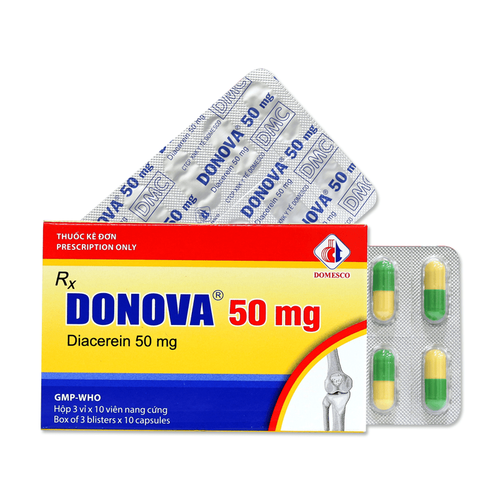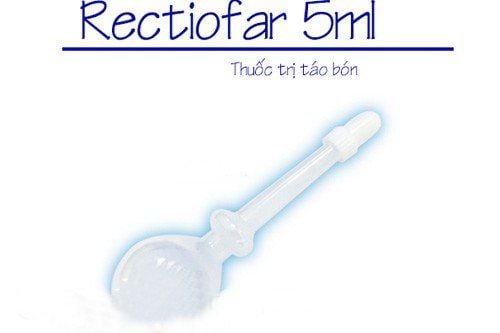This is an automatically translated article.
Posted by Doctor Nguyen Thai Ngoc Chau - Department of Pediatrics - Neonatology - Vinmec Phu Quoc International General Hospital.Intestinal obstruction syndrome is a common surgical emergency in neonates. Intestinal obstruction can occur in any part of the gastrointestinal tract, causing obstruction of substances present in the intestinal lumen. The disease is very dangerous, life-threatening for children if not diagnosed and treated promptly.
1. What are the symptoms of intestinal obstruction in infants?
Children with intestinal obstruction will have the following symptoms
Children vomiting gastric juice, bile, intestinal fluid Abdominal distention above the navel or the entire abdominal cavity, with floating intestinal loops Secretion - defecation, may still have diarrhea meconium or slow meconium stools or show opalescent clumps Whole body: signs of dehydration in varying degrees Depending on the location of the obstruction, the degree of obstruction and the duration of the disease, the above symptoms manifest in Different degrees of obstruction
High : from subpyloric to duodenal - jejunal angle
Vomiting: appearing early, usually on the first day, children vomit bile (subbulb of Vater) or milk, gastric juice (above balloon) Vater), vomiting is often completely obstructed, rarely partially obstructed Abdominal: no distention or distention above the navel, stomach dilated, spontaneously emerges or when stimulated Defecation: no meconium, white crystals cloudy or pale green, rarely if completely occluded; still defecates meconium but rarely if the obstruction is incomplete.

Moderate obstruction: obstruction in the jejunum - ileum (Treitz - van Bauhin angle)
Vomiting: usually on the 2nd or 3rd day after birth, vomiting bile, gastric juice, the degree depends on the degree of obstruction. Abdominal distention: regular abdominal distention, bowel loops distended, spontaneous peristaltic waves or abdominal skin stimulation Defecation: no meconium, milky or pale green crystals, rarely if completely obstructed, still meconium defecation but less if the occlusion is incomplete. Low obstruction: obstruction in the colon - rectum
Vomiting: appearing later, usually about 3 days after birth, vomiting bile, intestinal juices. Abdominal distention: usually full abdominal distention, with floating intestinal loops, signs of snakes. Defecation: no meconium; shows opalescent crystals if completely obstructed, still meconium defecation but little. Examination of the anus - rectum may show anorectal malformations
General condition: depending on the degree of obstruction and the duration of the illness, there will be signs:
Signs of dehydration Fever Respiratory disorders: due to abdominal distention , inhalation of vomit Jaundice Accompanying malformations.
2. What to do to diagnose bowel obstruction? When the child has the above symptoms, the doctor will do some more tests and paraclinical support to confirm the diagnosis of intestinal obstruction.
Abdominal radiographs are not prepared to diagnose the site of the obstruction and possibly the extent of the obstruction.

Gastrointestinal imaging: when unprepared, the obstruction and location of the obstruction are not clear. electrolytes, liver - kidney function, protein, albumin 3. What is the cause of intestinal obstruction? There are many causes of intestinal obstruction at any part of the gastrointestinal tract such as:
Obstruction in the duodenum due to total atrophy or disruption of the duodenum, duodenal stenosis... Obstruction in the small intestine due to intestinal atrophy, due to insertion pressure, meconium Obstruction in the colon, anus due to the meconium plug, colon atrophy, hirschprung, anorectal malformation
4. Treatment of intestinal obstruction in infants
Intussusception is a medical emergency. Children need emergency care to avoid excessive vomiting that causes dehydration, electrolyte loss, shock and to prevent infection that can occur when part of the intestine is necrotic due to anemia.
Procedures for treating intestinal obstruction in infants at the hospital include:
Infusion of fluids into the child through an intravenous line.

Decompress the intestines by inserting a catheter into the stomach from the nose. Remove the cage with gas or barium. This is an activity that has both diagnostic and therapeutic value. If the enema process is successful, the child does not need any further treatment. If intussusception does not work or the bowel has perforated, the child may need surgery to correct the obstruction.
5. Lifestyle suitable for children with intestinal obstruction
Give your child plenty of water to drink, breast milk (if still nursing), juice... to avoid dehydration gas-producing foods such as: beans, peanuts, vegetables, soft drinks. Give children easy-to-digestible and liquid foods such as soups and porridges. Low fiber diet, no grains and nuts. When suspecting that a child has an intestinal obstruction, parents need to take the child to the hospital immediately to be examined, diagnosed and treated promptly by a doctor.
Please dial HOTLINE for more information or register for an appointment HERE. Download MyVinmec app to make appointments faster and to manage your bookings easily.













